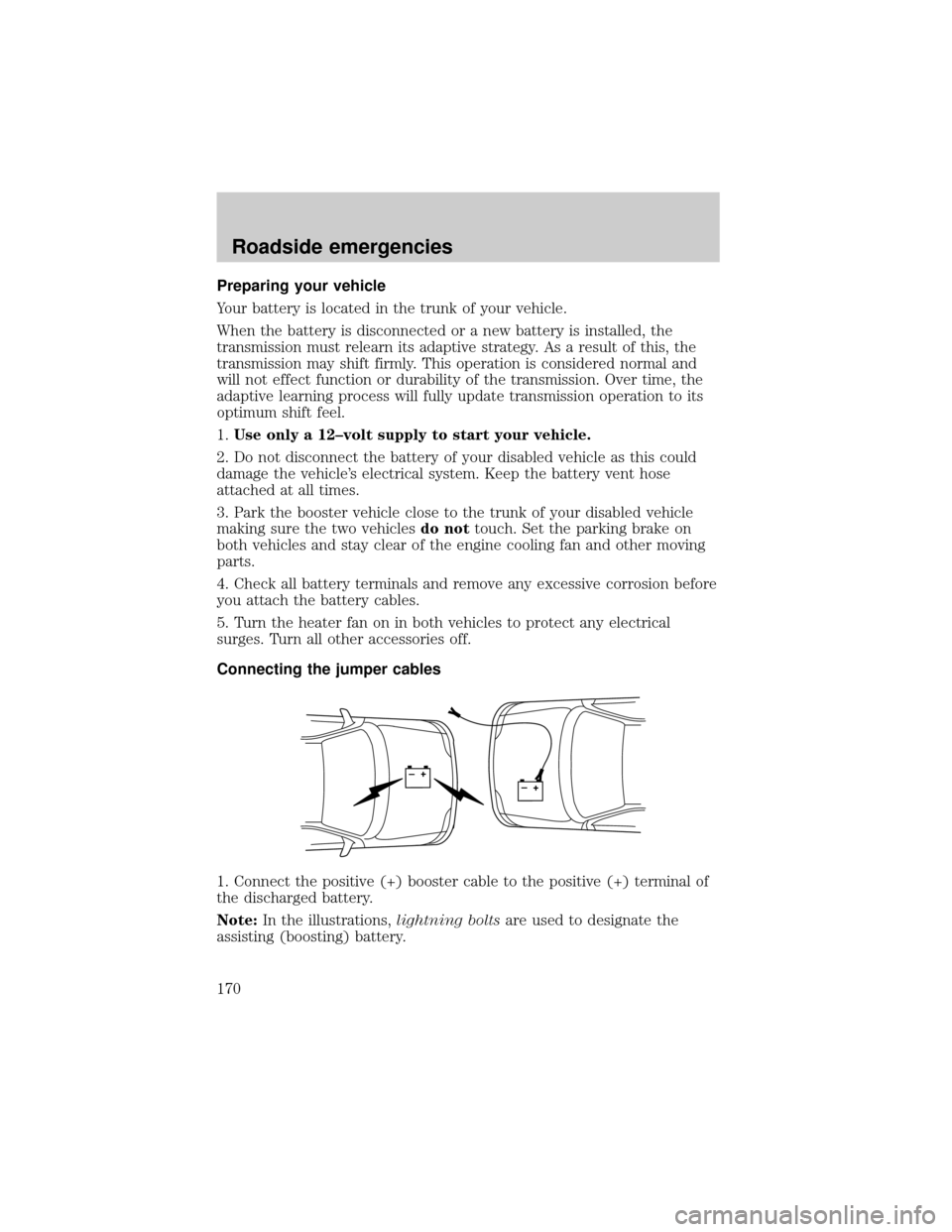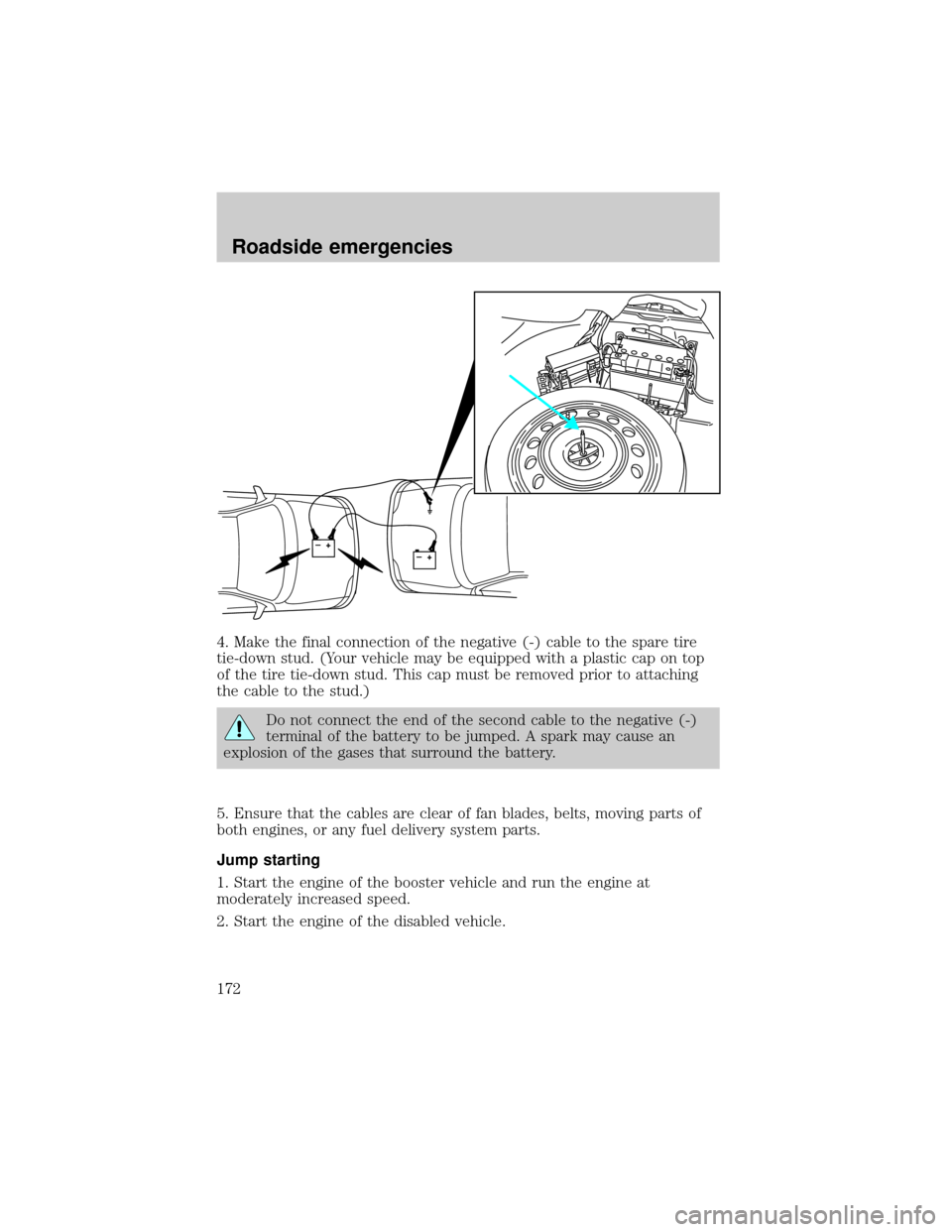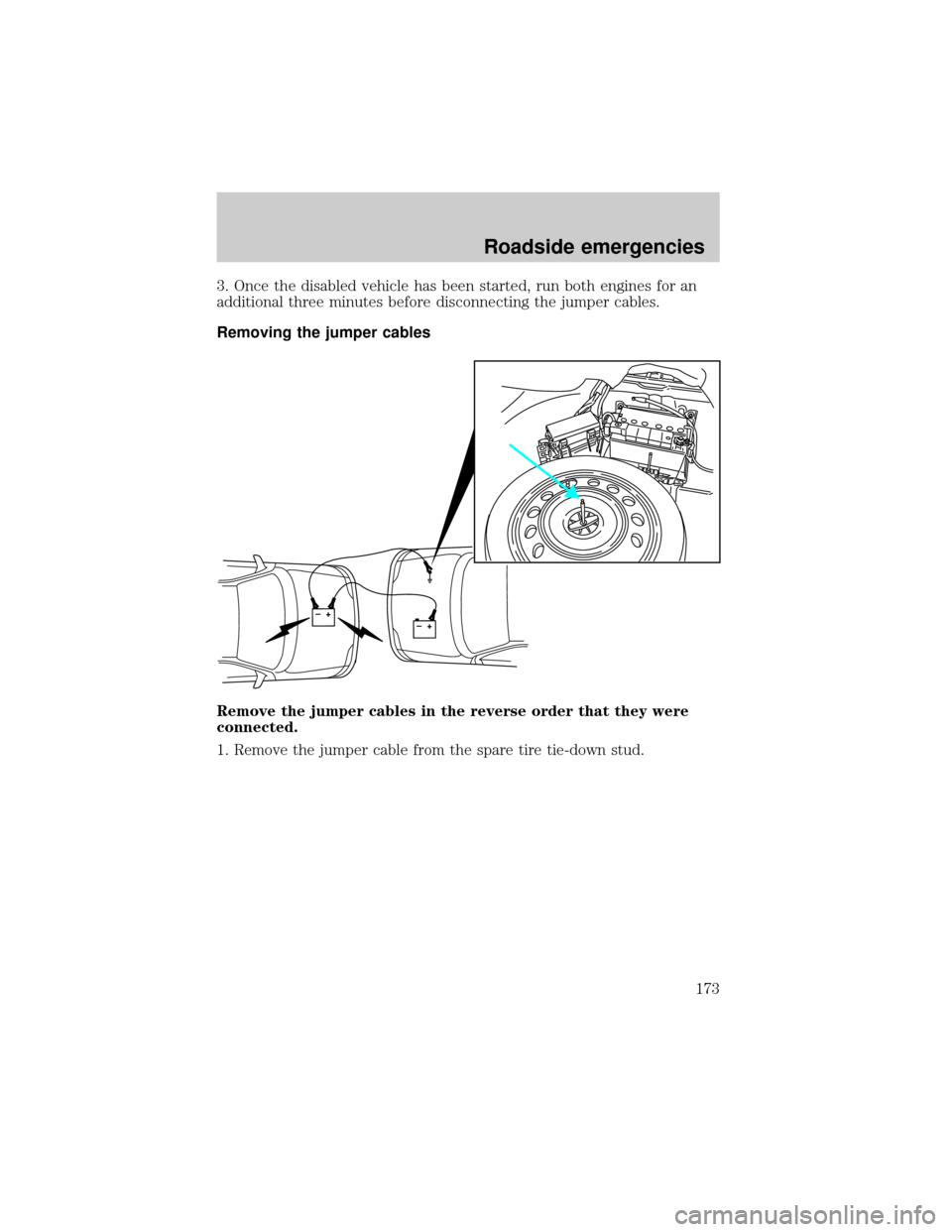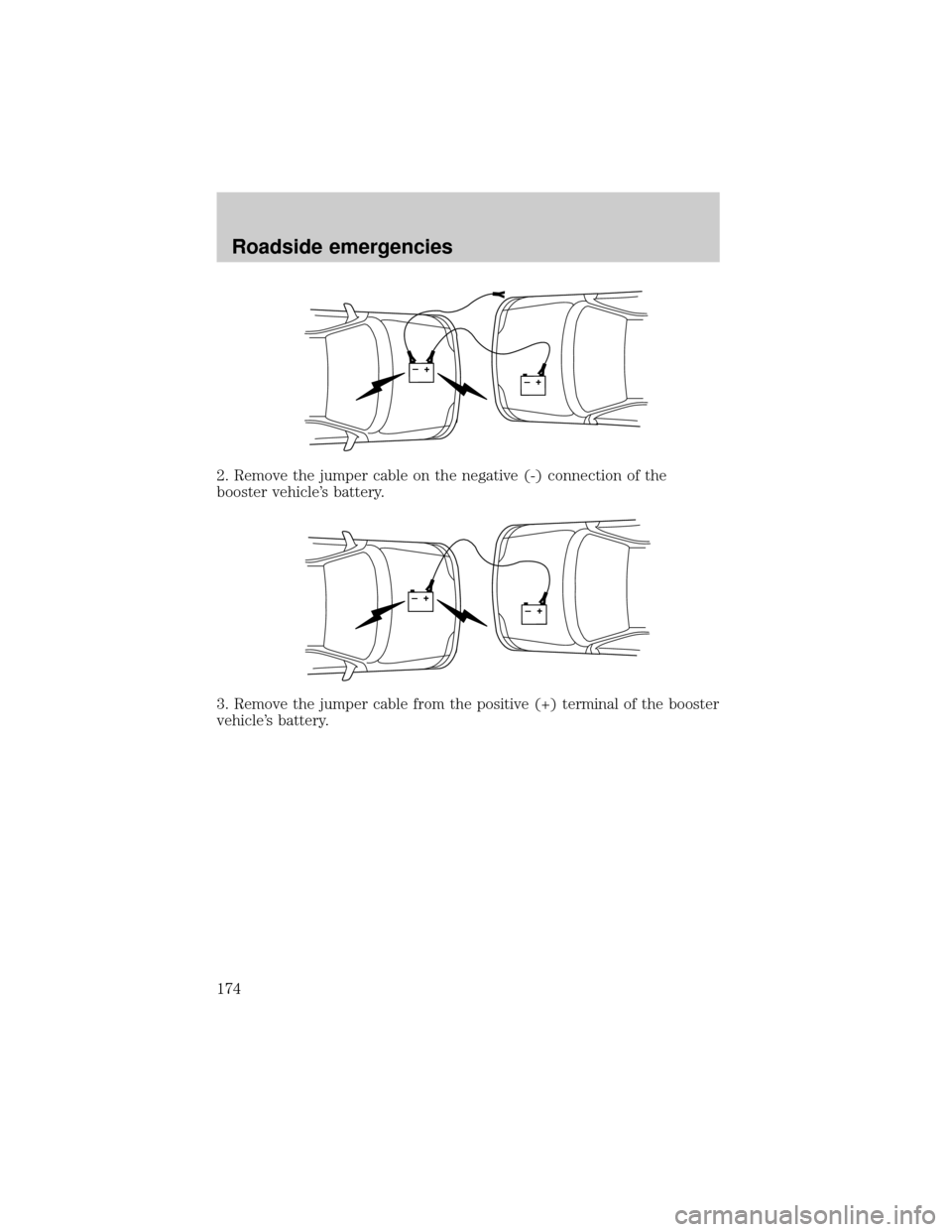jump cable FORD THUNDERBIRD 2002 11.G Owners Manual
Page 170 of 248

Page 172 of 248

Page 173 of 248

Page 174 of 248

Page 175 of 248

View, print and download for free: jump cable - FORD THUNDERBIRD 2002 11.G Owners Manual, 248 Pages, PDF Size: 2.1 MB. Search in FORD THUNDERBIRD 2002 11.G Owners Manual online. CarManualsOnline.info is the largest online database of car user manuals. FORD THUNDERBIRD 2002 11.G Owners Manual PDF Download. Preparing your vehicle Your battery is located in the trunk of your vehicle. When the battery is disconnected or a new battery is installed, the transmission mu
All product names, logos, and brands are property of their respective owners.